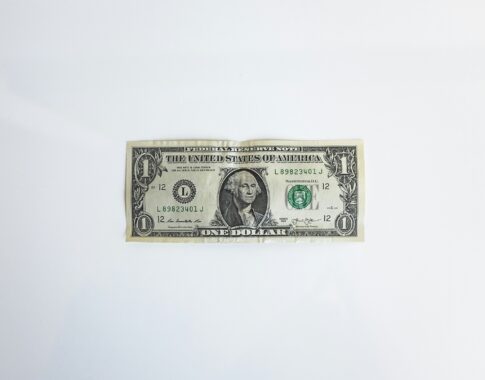Today, I will explain the following website. (AI-generated)
コラム:160円の攻防の行方、続伸の余地薄くとも底堅いドル=内田稔氏 | ロイター
Contents
Understanding the USD/JPY Currency Exchange Dynamics
The recent remarks by Japan’s Prime Minister, Fumio Kishida, on the vigilant monitoring of the yen’s depreciation, underscore the exceptional nature of a national leader commenting on currency markets. Such statements often signal a threshold beyond which the government may not tolerate further weakening of the yen, especially when it reaches critical levels like 160 against the US dollar. The underlying concern, however, extends beyond exchange rates to the impact of a weaker yen on import inflation and household finances, which can be detrimental to a government’s approval ratings.
The Recent Statements by Japan’s Prime Minister on Yen Depreciation
Prime Minister Kishida’s statements during the economic and fiscal policy meeting highlight the close attention the government and the Bank of Japan (BoJ) are paying to the yen’s movements. This level of scrutiny is unusual and could be compared to the former US President Trump’s approach, indicating that the current USD/JPY levels might be pushing the boundaries of what the government deems acceptable.
Implications of the USD/JPY Exchange Rate Reaching 160 Yen
The potential of the USD/JPY exchange rate reaching 160 yen carries significant implications. It signals a level that might prompt government intervention, as such a rate could exacerbate import inflation and affect household spending power. The government’s primary concern is likely the resultant inflationary pressures rather than the exchange rate itself, as inflation can be a critical issue for political stability and public support.
How Government and Central Bank Policies Influence Exchange Rates
Government and central bank policies are pivotal in influencing exchange rates. In Japan’s case, the BoJ’s monetary easing has been a primary factor in the yen’s performance. The current policy interest rates in Japan are between 0-0.1%, and long-term interest rates hover around 1%. However, when adjusted for inflation, the real interest rates are significantly negative, which underscores the yen’s weakness and the continued aggressive monetary easing stance of the BoJ.
Key Economic Indicators Affecting USD/JPY
The Role of Japan’s Monetary Easing in the Yen’s Performance
Japan’s monetary easing policy has been a central driver of the yen’s depreciation. The persistently low and negative real interest rates in Japan, compared to other major economies, highlight the yen’s vulnerability and the BoJ’s commitment to monetary easing. To curb the yen’s decline, a rise in interest rates by the BoJ and a reduction in inflation are necessary.
Assessing the Impact of Inflation and Household Spending in Japan
Inflation and household spending are critical economic indicators that can influence the USD/JPY exchange rate. Inflation, particularly import inflation due to a weaker yen, directly impacts household spending by eroding purchasing power. The balance between household debt and financial assets is also a factor, with rising costs of goods and services affecting all households, not just those with debt.
The Potential Effects of a Minor Interest Rate Hike by the Bank of Japan
A minor interest rate hike by the BoJ could have various effects. While there are concerns about the impact on housing loan interest rates, it is essential to consider that financial assets significantly outweigh household debt. An interest rate hike could mitigate the negative effects of inflation and potentially stabilize consumer spending, despite the potential risks to economic growth.
Forecasting the Future of USD/JPY Exchange Rate
Market Expectations and the Possibility of a Policy Shift by the Bank of Japan
Market expectations currently do not foresee a significant rise in policy interest rates within the next two years. However, there is a possibility that the BoJ may shift its stance more quickly and steeply than anticipated. This could introduce a measure of restraint on the yen’s depreciation. Additionally, comments from BoJ Governor Ueda Kazuo suggest that long-term interest rates are expected to be primarily shaped by financial markets, potentially rising to 1.2-1.3% by year-end, which could also act as a brake on the yen’s decline.
How U.S. Economic Slowdown and Persistent Inflation Might Affect USD/JPY
A slowdown in the U.S. economy and persistent inflation could have complex effects on the USD/JPY exchange rate. A cooling labor market and reduced wage growth suggest a potential easing of the U.S. economy, which might lead to a decrease in long-term interest rates. However, inflation may not necessarily follow suit, with factors such as housing costs and energy prices potentially maintaining inflationary pressures.
Scenarios: Peak and Bottom Projections for the USD/JPY Rate
Considering various scenarios, the USD/JPY rate could experience both peaks and troughs. A resurgence in global inflation could push the exchange rate higher, while a rapid slowdown in the U.S. economy could lead to a narrowing interest rate differential and a lower USD/JPY rate. It’s important to note that these are projections and actual market movements could be influenced by numerous factors, including geopolitical risks and policy decisions by central banks.













